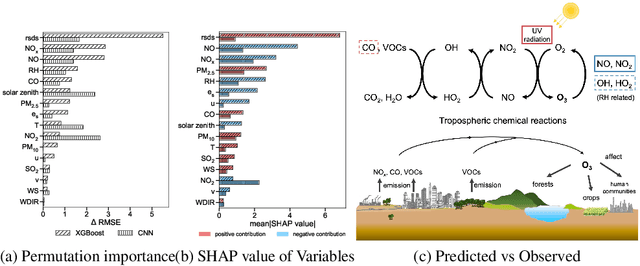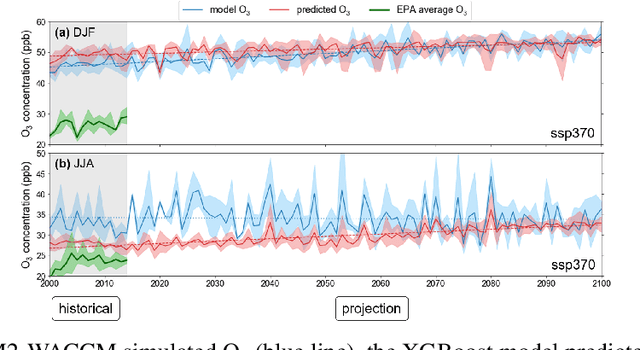Investigating the Ground-level Ozone Formation and Future Trend in Taiwan
Paper and Code
Dec 18, 2020


Tropospheric ozone (O3) is an influential ground-level air pollutant which can severely damage the environment. Thus evaluating the importance of various factors related to the O3 formation process is essential. However, O3 simulated by the available climate models exhibits large variance in different places, indicating the insufficiency of models in explaining the O3 formation process correctly. In this paper, we aim to understand the impact of various factors on O3 formation and predict the O3 concentrations. Six well-known supervised learning methods are evaluated to estimate the observed O3 using sixteen meteorological and chemical variables. We find that the XGBoost and the convolution neural network (CNN) models achieve most accurate predictions. We also demonstrate the importance of several variables empirically. The results suggest that while Nitrogen Oxides negatively contributes to predicting O3, the amount of solar radiation makes significantly positive contribution. Furthermore, we apply the XGBoost model on climate O3 prediction and show its competence in calibrating the O3 simulated by a global climate model.
 Add to Chrome
Add to Chrome Add to Firefox
Add to Firefox Add to Edge
Add to Edge